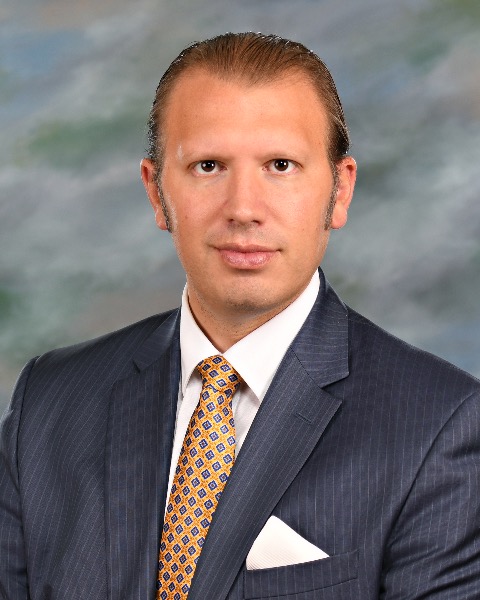Deformity
Development of a Hierarchical Approach to SRS-Schwab Modifier Realignment in ASD Surgery
Friday, February 21, 2025
7:00 AM - 2:00 AM EST

Peter G. Passias, MD
Professor
Duke University
Duke University Heath System
New Canaan, CT, US
Presenting Author(s)
Introduction: Patient-reported outcome measures have become ubiquitous for assessing improvement after corrective spine surgery. There remains a paucity of literature regarding the order of addressing SRS-Schwab modifiers during corrective surgery for ASD.
Methods: Descriptive analysis identified cohort demographics, radiographic parameters, and surgical details. Significant differences in outcomes between patients who achieved age-aligned match in SRS-Schwab criteria (ideal alignment) and those with deformities at 1 years (1Y) were isolated. Multivariate analysis (MVA) controlling for baseline disability assessed which SRS-Schwab criteria had the greatest impact on outcomes and the patients matching in that parameter were isolated. The following parameters were assessed for differences in complication rates and meeting MCID in either ODI or SRS-Total at one year via multivariate analysis controlling for baseline disability.
Results: 445 ASD patients (59.3±15yrs, 26.9± kg/m2, CCI: 1.52±1.6, FI: 3.09±1.6) who underwent surgery (11.6±4 levels fused, EBL: 1522±1275 mL, op time: 337±124 min, LOS: 7.3±3.9 days) were included. 62.2% underwent a posterior approach, 36.5% underwent a combined approach, 46% underwent a decompression, and 65% underwent an osteotomy. Patients had the following mean baseline Schwab modifier measurements: SVA 64.2±72.3 cm, PI-LL 15.5±21.6 cm, PT 23.82±10.9 cm, and T4-T12 -34.2±20.3 cm. Age-aligned match SVA at one year was most significantly correlated with lower complication rates and improved outcomes when compared to being overcorrected or undercorrected. There were no significant differences based on realignments in PT at one year in either complication rates or clinical outcomes. Rates of meeting MCID in either ODI or SRS-Total did not differ when comparing PI-LL realignment. However, SVA-matched patients developed more PJK/PJF, minor complications, and a higher rate of reoperation when overcorrected in PI-LL (all p<.05).
Conclusion : The SRS-Schwab classification has demonstrated strong correlation to HRQL metrics and complications. Correction of SVA to ideal age-adjusted values should be prioritized during surgery. The analysis of correction in PI-LL or PT following realignment in SVA improves our understanding of the interplay of various radiographic parameters and enables spine surgeons to provide more tailored corrections based on the presentation of ASD patients.
Methods: Descriptive analysis identified cohort demographics, radiographic parameters, and surgical details. Significant differences in outcomes between patients who achieved age-aligned match in SRS-Schwab criteria (ideal alignment) and those with deformities at 1 years (1Y) were isolated. Multivariate analysis (MVA) controlling for baseline disability assessed which SRS-Schwab criteria had the greatest impact on outcomes and the patients matching in that parameter were isolated. The following parameters were assessed for differences in complication rates and meeting MCID in either ODI or SRS-Total at one year via multivariate analysis controlling for baseline disability.
Results: 445 ASD patients (59.3±15yrs, 26.9± kg/m2, CCI: 1.52±1.6, FI: 3.09±1.6) who underwent surgery (11.6±4 levels fused, EBL: 1522±1275 mL, op time: 337±124 min, LOS: 7.3±3.9 days) were included. 62.2% underwent a posterior approach, 36.5% underwent a combined approach, 46% underwent a decompression, and 65% underwent an osteotomy. Patients had the following mean baseline Schwab modifier measurements: SVA 64.2±72.3 cm, PI-LL 15.5±21.6 cm, PT 23.82±10.9 cm, and T4-T12 -34.2±20.3 cm. Age-aligned match SVA at one year was most significantly correlated with lower complication rates and improved outcomes when compared to being overcorrected or undercorrected. There were no significant differences based on realignments in PT at one year in either complication rates or clinical outcomes. Rates of meeting MCID in either ODI or SRS-Total did not differ when comparing PI-LL realignment. However, SVA-matched patients developed more PJK/PJF, minor complications, and a higher rate of reoperation when overcorrected in PI-LL (all p<.05).
Conclusion : The SRS-Schwab classification has demonstrated strong correlation to HRQL metrics and complications. Correction of SVA to ideal age-adjusted values should be prioritized during surgery. The analysis of correction in PI-LL or PT following realignment in SVA improves our understanding of the interplay of various radiographic parameters and enables spine surgeons to provide more tailored corrections based on the presentation of ASD patients.

.jpg)